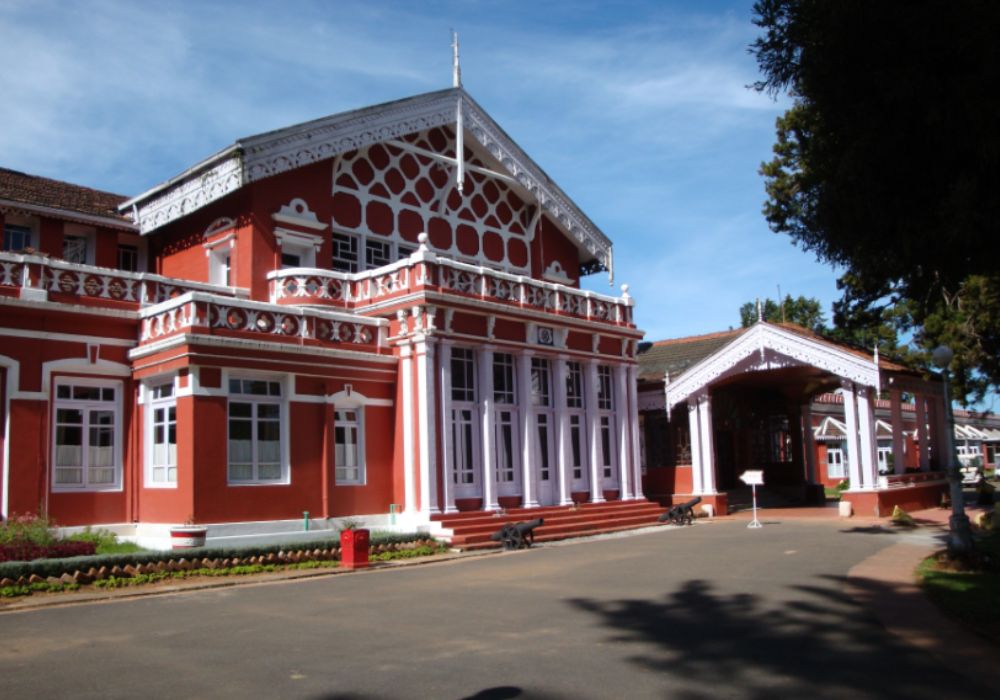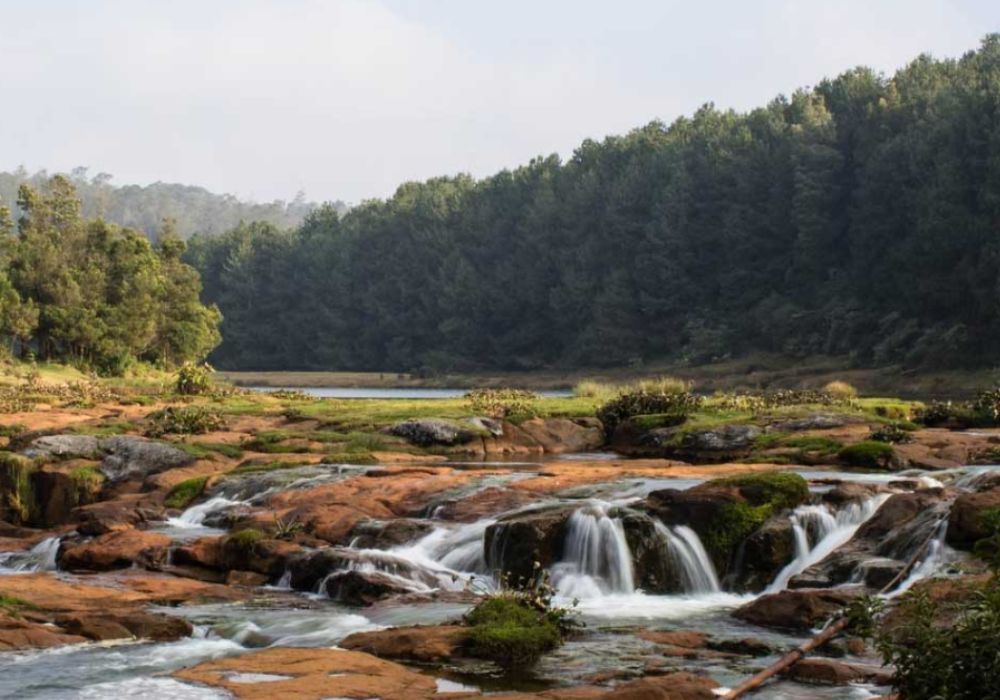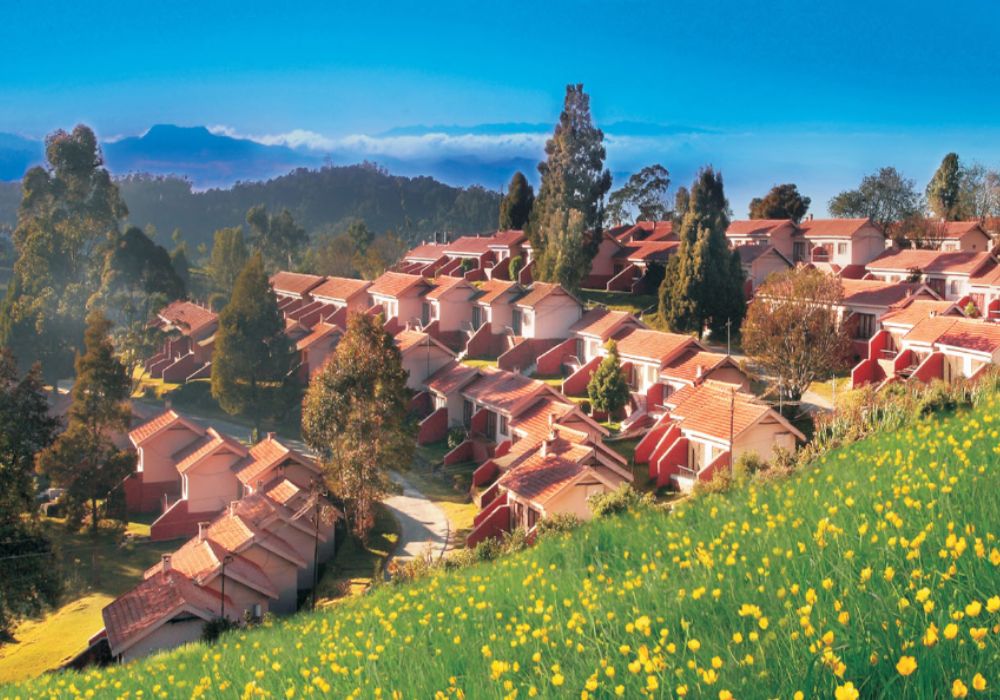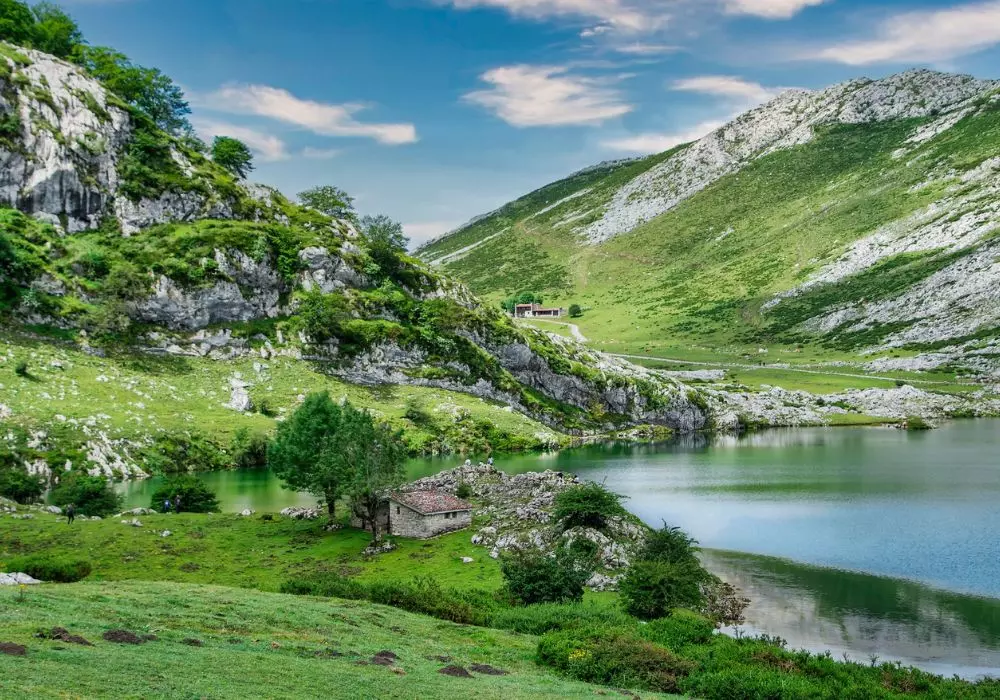Nestled in the picturesque Nilgiri Hills of Tamil Nadu, Ooty stands as a shining gem among India’s hill stations.
Known for its lush green landscapes, cool climate, and colonial charm, Ooty hill station has been a favorite destination for travelers seeking respite from the heat of the plains.
Its popularity among tourists is well-deserved, thanks to its stunning gardens, scenic lakes, and myriad of outdoor activities.
Ooty, officially known as Udhagamandalam, is a testament to Tamil Nadu’s natural beauty and cultural heritage.
Ooty’s significance as a Ooty hill station lies in its history and its ability to offer a peaceful retreat amidst nature’s beauty.
The town was established as a hill station by the British in the 19th century, who were captivated by its cool climate and stunning landscapes.
Today, Ooty continues to attract visitors from all over the world, drawn by its tranquil surroundings and plethora of attractions.
From the sprawling Botanical Gardens to the picturesque Ooty Lake, there’s no shortage of things to see and do in this charming hill station.
Whether you’re looking to relax amidst the tea plantations, explore the local markets, or embark on a trek through the hills, Ooty offers something for everyone.
Join us as we embark on a journey through this enchanting Ooty hill station and discover the magic of Ooty for yourself.
Ooty Hill Station: Key Details and visit Information
| Feature | Description |
| Location | Ooty, Nilgiris district, Tamil Nadu, India |
| Elevation | Approximately 2,240 meters (7,350 feet) above sea level |
| Known For | Scenic landscapes, tea gardens, botanical gardens, and pleasant climate |
| Major Attractions | Ooty Botanical Gardens, Ooty Lake, Doddabetta Peak, Rose Garden, and Nilgiri Mountain Railway |
| Activities | Boating on Ooty Lake, trekking, visiting tea estates, exploring botanical gardens, and riding the Nilgiri Mountain Railway |
| Climate | Mild and pleasant throughout the year; cool temperatures during the summer and cold winters |
| Accessibility | Nearest airport is Coimbatore International Airport, about 85 km away; well-connected by road and rail; nearest railway station is Ooty Railway Station |
| Nearby Attractions | Coonoor, Kotagiri, and the Nilgiri Hills region |
| Festivals Celebrated | Summer Festival, Flower Show, and Tea and Tourism Festival |
| Best Time to Visit | April to June and September to November for the best weather and to enjoy outdoor activities |
History of Ooty Hill Station


Ooty’s history dates back to the early 19th century when it was discovered by the British during their colonial rule in India.
The area was originally inhabited by the Toda tribe, who referred to the region as “Othakal-mund” which means “single stone”.
The British, captivated by the region’s natural beauty and cool climate, soon began developing it as a hill station.
In 1821, the British established Ooty as a hill station and summer retreat. They named it Udhagamandalam, a name derived from the Tamil words “othai” meaning “single” and “kal” meaning “stone”, as well as “mund” which means “forest” or “hut”.
Over time, the name was anglicized to “Ooty” for easier pronunciation.
During the British colonial period, Ooty became a popular destination for British officials and their families seeking respite from the heat of the plains.
The British developed Ooty’s infrastructure, including roads, schools, and churches, giving it the appearance of a quintessential English town.
Today, Ooty retains much of its colonial charm, with its colonial-era buildings, lush landscapes, and cool climate continuing to attract visitors from around the world.
Geography and Climate


Ooty is situated in the Nilgiri Hills, also known as the Blue Mountains, in the state of Tamil Nadu, India.
It is located at an altitude of 2,240 meters (7,350 feet) above sea level, making it one of the highest hill stations in South India.
The town is surrounded by dense forests, rolling hills, and tea plantations, offering breathtaking views of the surrounding landscapes.
One of the most striking features of Ooty is its cool and pleasant climate throughout the year.
Summers are mild, with temperatures ranging from 15°C to 25°C (59°F to 77°F), making it an ideal escape from the scorching heat of the plains.
The monsoon season, from June to September, brings moderate to heavy rainfall, which adds to the lush greenery of the region.
Winters, from November to February, are cool and crisp, with temperatures dropping to as low as 0°C (32°F) at night.
The winter months are perfect for enjoying the misty mornings and cozy evenings by the fireplace.
Ooty’s pleasant climate, coupled with its stunning landscapes and colonial charm, has made it a popular summer retreat and a year-round destination for tourists seeking a break from the hustle and bustle of city life.
Tourist Attractions


Ooty is home to several major tourist attractions that showcase its natural beauty and cultural heritage. One of the most popular attractions is the Government Botanical Gardens, spread over 55 acres and established in 1848.
The gardens are home to a wide variety of exotic plants, flowers, and trees, including a fossilized tree trunk that is believed to be over 20 million years old.
Another must-visit attraction is the Ooty Lake, a man-made lake constructed in 1824.
The lake offers boating facilities and is surrounded by lush greenery, making it a popular spot for picnics and leisurely strolls.
For panoramic views of the surrounding hills and valleys, visitors can head to Doddabetta Peak, the highest point in the Nilgiris.
The peak offers breathtaking views of the entire region and is a popular spot for trekking and photography.
The Rose Garden is another popular attraction, home to over 2,000 varieties of roses. The garden is a feast for the senses, with the fragrant blooms adding to the charm of the surroundings.
Wildlife and Nature


Ooty is surrounded by the Nilgiri Biosphere Reserve, which is known for its rich biodiversity.
The reserve is home to several wildlife sanctuaries and national parks, including the Mudumalai National Park and the Mukurthi National Park.
The Mudumalai National Park is home to a variety of wildlife, including elephants, tigers, leopards, and deer.
The park also boasts a diverse range of bird species, making it a paradise for bird watchers.
The Mukurthi National Park is known for its shola-grassland ecosystems and is home to several endangered species, including the Nilgiri tahr.
The park is also a hotspot for trekking and offers stunning views of the surrounding hills and valleys.
Overall, Ooty’s rich biodiversity and stunning natural beauty make it a paradise for nature lovers and wildlife enthusiasts alike.
Culture and Cuisine


Ooty Hill Station’s culture and cuisine are as diverse and captivating as its scenic beauty.
The culture of Ooty is a beautiful blend of various influences, including Tamil, Kannada, Malayalam, and English traditions.
This blend is reflected in the region’s festivals, cuisine, and daily life, making Ooty a fascinating destination for cultural enthusiasts.
One of the most prominent cultural aspects of Ooty Hill Station is its vibrant festivals.
The annual Tea and Tourism Festival, held in Ooty, celebrates the region’s tea industry and attracts visitors from far and wide.
The Summer Festival is another popular event, featuring traditional music, dance, and local cuisine, showcasing the rich cultural heritage of Ooty.
When it comes to cuisine, Ooty offers a delightful array of dishes that cater to every palate.
The cuisine of Ooty is predominantly South Indian, with a focus on rice, lentils, and vegetables.
However, due to its colonial past, you can also find a variety of English dishes in Ooty, such as sandwiches, cakes, and pastries, which add to the culinary diversity of the region.
Some of the must-try dishes in Ooty Hill Station include the flavorful biryanis, spicy curries, and the famous Ooty varkis, which are crispy and savory snacks.
Additionally, Ooty is renowned for its homemade chocolates, which are a delightful treat for visitors to savor.
Ooty Hill Station’s culture and cuisine are a reflection of its rich history and diverse influences, making it a captivating destination for travelers seeking a unique cultural experience.
Activities and Things to Do


Ooty Hill Station offers a plethora of activities and things to do, ensuring a memorable experience for every visitor.
Whether you’re a nature enthusiast, an adventure seeker, or a culture lover, Ooty has something to offer everyone.
For nature lovers, a visit to the Government Botanical Garden is a must.
Spread over 55 acres, the garden is home to a variety of exotic plants, flowers, and trees, making it a paradise for botany enthusiasts and photographers alike.
The Ooty Lake is another popular attraction, offering boat rides and scenic views of the surrounding hills.
Adventure seekers can indulge in trekking and hiking expeditions in the nearby Nilgiri Biosphere Reserve.
The Doddabetta Peak, the highest peak in the Nilgiris, offers breathtaking views of the surrounding hills and is a popular trekking destination.
Wildlife enthusiasts can also visit the Mudumalai Wildlife Sanctuary, home to a variety of flora and fauna, including elephants, tigers, and deer.
For those interested in culture and history, Ooty offers a glimpse into its colonial past through attractions such as the Stone House and St. Stephen’s Church.
The Tribal Research Center provides insights into the indigenous tribes of the region, offering a unique cultural experience.
Overall Ooty Hill Station is a destination that caters to all interests, offering a perfect blend of nature, adventure, and culture.
Whether you’re looking to relax amidst scenic beauty or explore the outdoors, Ooty has something for everyone, ensuring a memorable and fulfilling experience for all visitors.
Accommodation and Stay Options


Ooty, being a popular tourist destination, offers a wide range of accommodation options to suit every budget and preference.
Whether you’re looking for a luxurious stay or a cozy retreat, Ooty has something for everyone. Here are some of the accommodation options available in Ooty:
Hotels and Resorts: Ooty is home to several hotels and resorts that offer comfortable and luxurious stays.
These hotels range from budget-friendly options to 5-star resorts, offering a variety of amenities such as swimming pools, spas, and restaurants.
Guesthouses: For a more homely experience, you can opt for guesthouses in Ooty.
These guesthouses are usually run by local families and offer a warm and welcoming atmosphere. They are a great option for budget travelers looking for affordable accommodation.
Homestays: Experience the local culture and hospitality by staying in a homestay in Ooty.
Homestays offer a unique opportunity to stay with local families and immerse yourself in the local way of life.
They are a great way to experience the local culture and cuisine firsthand.
Cottages: If you’re looking for a more private and secluded stay, you can opt for cottages in Ooty. These cottages are usually located amidst lush greenery and offer a peaceful and tranquil atmosphere.
They are perfect for couples and families looking for a romantic getaway.
Tented Accommodation: For the adventurous souls, Ooty also offers tented accommodation options. These tents are usually set up in picturesque locations and offer a unique camping experience amidst nature.
Transportation and Connectivity
Ooty, nestled in the Nilgiri Hills, is well-connected to major cities in Tamil Nadu and neighboring states. Visitors can reach Ooty by road, rail, and air, each offering a unique and scenic journey.
Road Connectivity: Ooty is well-connected by road, with regular bus services available from nearby cities like Coimbatore, Mysore, and Bangalore. The journey to Ooty by road is a picturesque one, with winding roads that offer breathtaking views of the surrounding hills and valleys.
Rail Connectivity: The Nilgiri Mountain Railway, a UNESCO World Heritage Site, offers a memorable train journey from Mettupalayam to Ooty. The toy train, as it is fondly called, chugs along through lush forests, tea gardens, and steep hills, offering panoramic views of the Nilgiri Hills.
Air Connectivity: The nearest airport to Ooty is Coimbatore International Airport, located about 88 kilometers away. From the airport, visitors can hire a taxi or take a bus to reach Ooty. The journey from Coimbatore to Ooty is a scenic one, passing through lush greenery and winding roads.
Within Ooty: Once you reach Ooty, transportation within the town is mainly by taxis, auto-rickshaws, and buses. Taxis and auto-rickshaws are readily available and are a convenient way to explore the town and its surroundings. Buses are also available for those looking for a more economical mode of transportation.
Shopping and Markets


Ooty offers a delightful shopping experience for tourists, with a variety of markets and shops selling local handicrafts, souvenirs, and products. Here are some popular shopping destinations in Ooty:
- Charring Cross: Located in the heart of Ooty, Charring Cross is a bustling market area where you can find a wide range of items, including clothing, accessories, handicrafts, and souvenirs. The market is known for its vibrant atmosphere and is a great place to shop for local products.
- Tibetan Market: Situated near the Ooty Lake, the Tibetan Market is a must-visit for those looking to buy souvenirs and handicrafts. The market is known for its Tibetan artifacts, jewelry, and clothing, all of which make for unique and memorable gifts.
- Upper Bazaar Road: This road is lined with shops selling a variety of items, including tea, spices, clothing, and handicrafts. It’s a great place to shop for local products and souvenirs while soaking in the lively atmosphere of the market.
- Tea and Chocolate Emporiums: Ooty is famous for its tea and handmade chocolates, and there are several emporiums and shops where you can purchase these delicious treats. The Tea Museum and the Government Tea Factory are popular destinations for tea enthusiasts, offering a wide range of teas to choose from. Handmade chocolate shops like King Star and Modern Stores are famous for their delectable chocolates, perfect for indulging your sweet tooth.
- Local Markets: Ooty is home to several local markets where you can buy fresh produce, spices, and other local products. These markets offer a glimpse into the local way of life and are a great place to shop for authentic Ooty products.
Tips for Travelers
- Best Time to Visit: The best time to visit Ooty is from October to June, when the weather is pleasant and ideal for sightseeing and outdoor activities. Avoid visiting during the monsoon season (July to September) as heavy rainfall can disrupt travel plans.
- What to Pack: Pack warm clothing, especially if you’re visiting during the winter months, as the nights can get quite chilly. Comfortable walking shoes are also recommended, as Ooty’s hilly terrain requires a lot of walking.
- Safety Tips: While Ooty is generally a safe destination, it’s important to take precautions like avoiding isolated areas at night and keeping your belongings secure. Also, be mindful of the local wildlife, especially if you’re trekking or exploring the forests.
- Respecting Local Culture: It’s important to respect the local culture and traditions of Ooty. Dress modestly when visiting religious sites, and always ask for permission before taking photographs of locals. Also, be mindful of the environment and avoid littering or damaging the natural surroundings.
Conclusion
In conclusion, Ooty Hill Station is a captivating destination that offers a unique blend of natural beauty, cultural heritage, and adventure.
Nestled in the Nilgiri Hills of Tamil Nadu, Ooty is renowned for its picturesque landscapes, lush tea gardens, and tranquil lakes, making it a haven for nature lovers and photographers.
One of the highlights of Ooty Hill Station is the Government Botanical Garden, which showcases a diverse range of flora and fauna, including rare orchids and exotic plants.
The Ooty Lake is another popular attraction, offering boating and breathtaking views of the surrounding hills.
For adventure enthusiasts, Ooty Hill Station offers opportunities for trekking, hiking, and wildlife safaris in the nearby Nilgiri Biosphere Reserve.
The hill station also boasts a rich cultural heritage, with attractions such as the Stone House and St. Stephen’s Church reflecting its colonial past.
In conclusion, Ooty Hill Station is a destination that captivates visitors with its natural beauty, adventure activities, and cultural richness.
Whether you’re seeking a peaceful retreat amidst nature or an adventurous getaway, Ooty has something to offer everyone, making it a must-visit destination in India.


